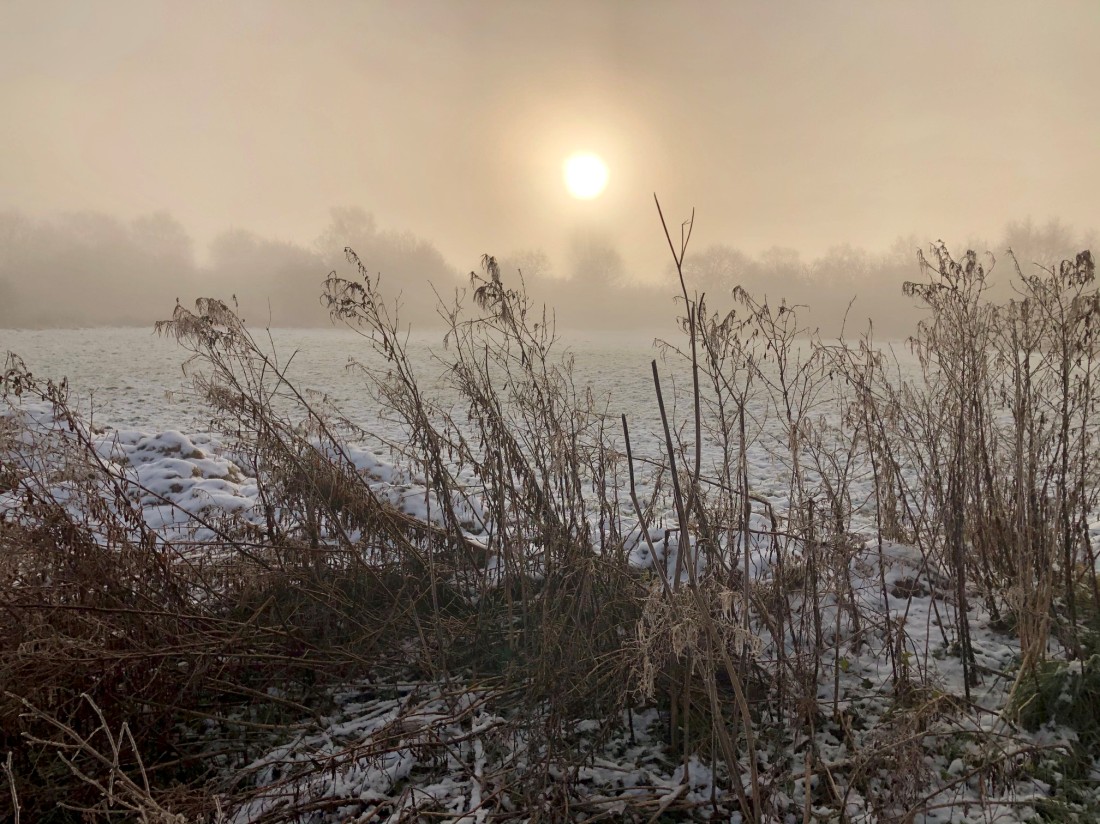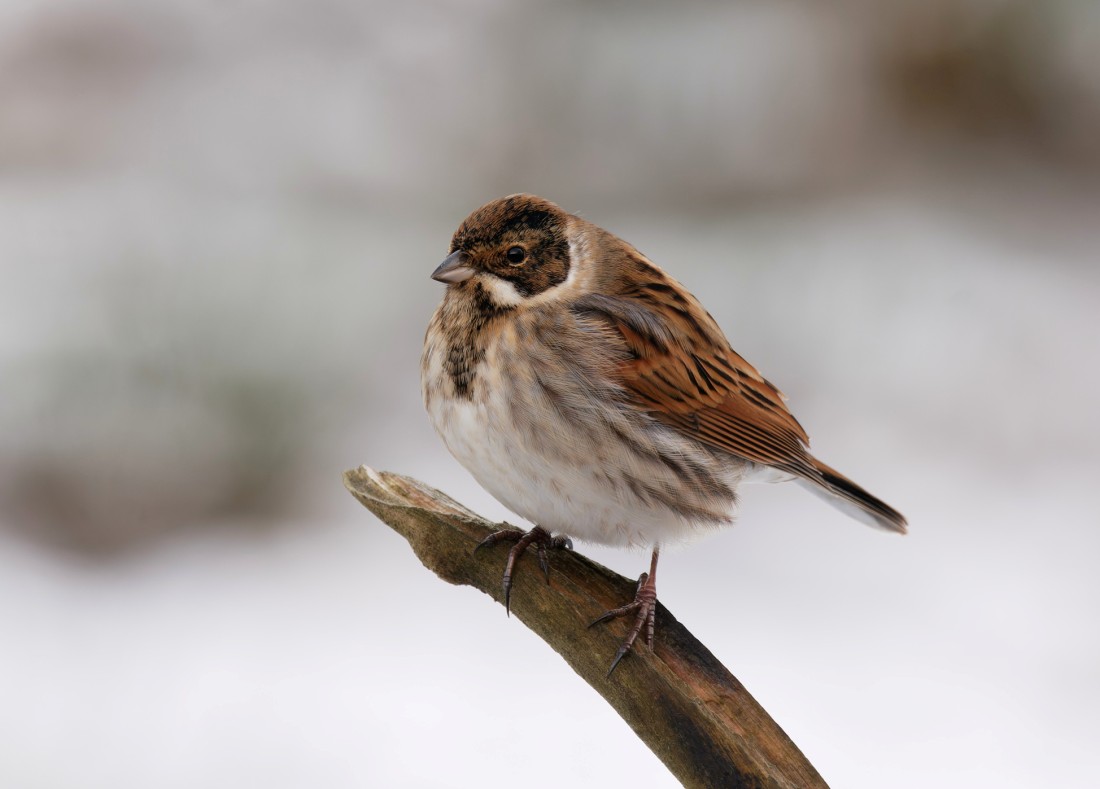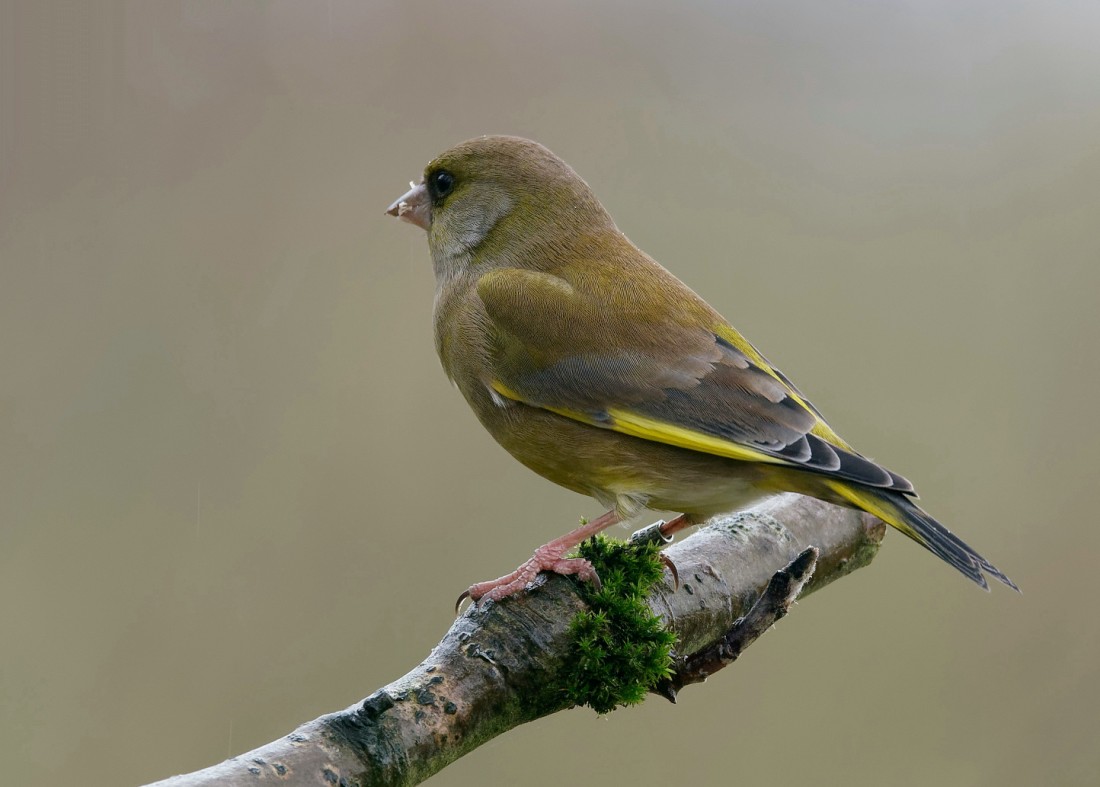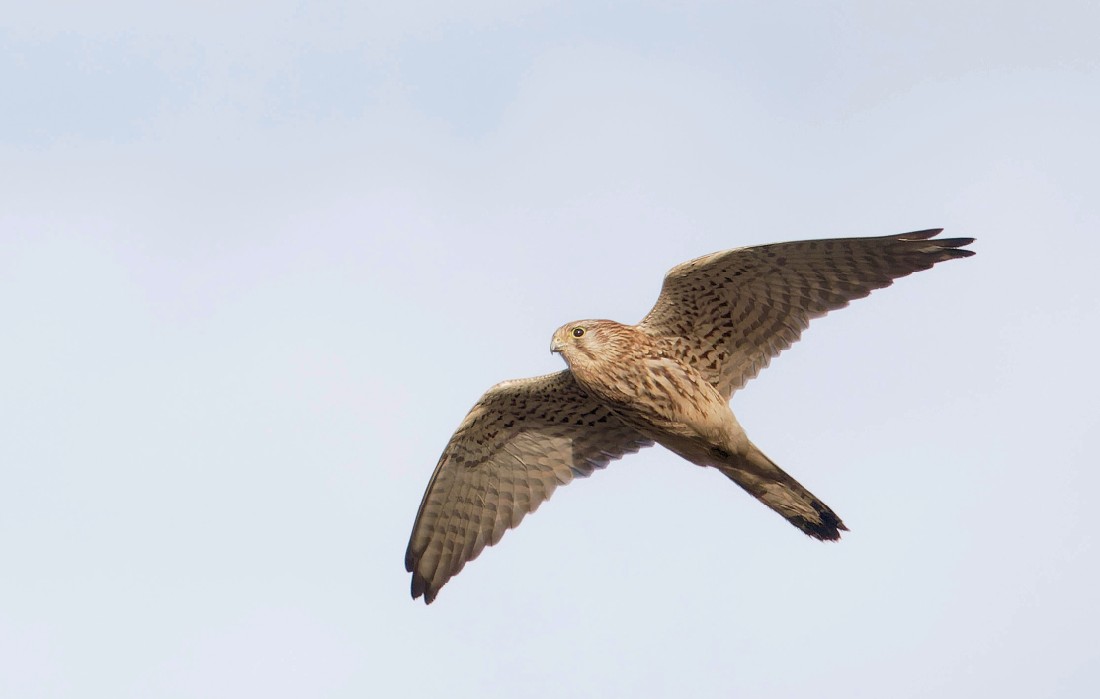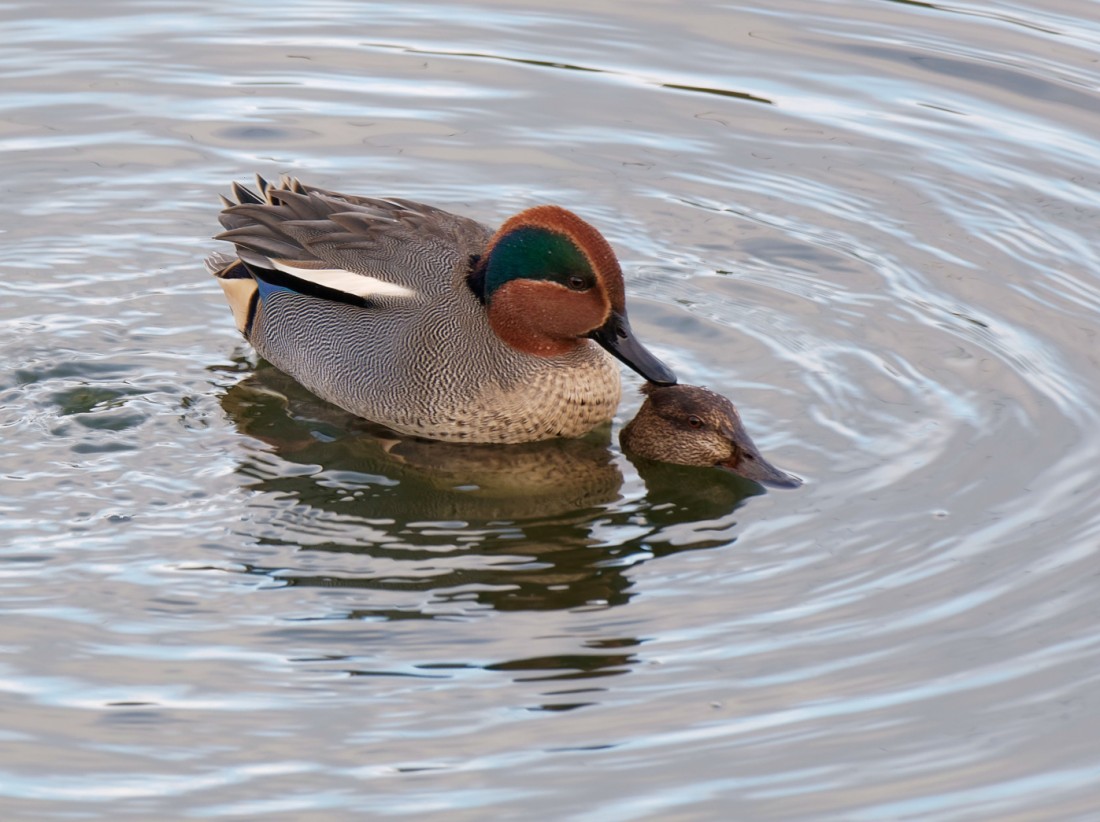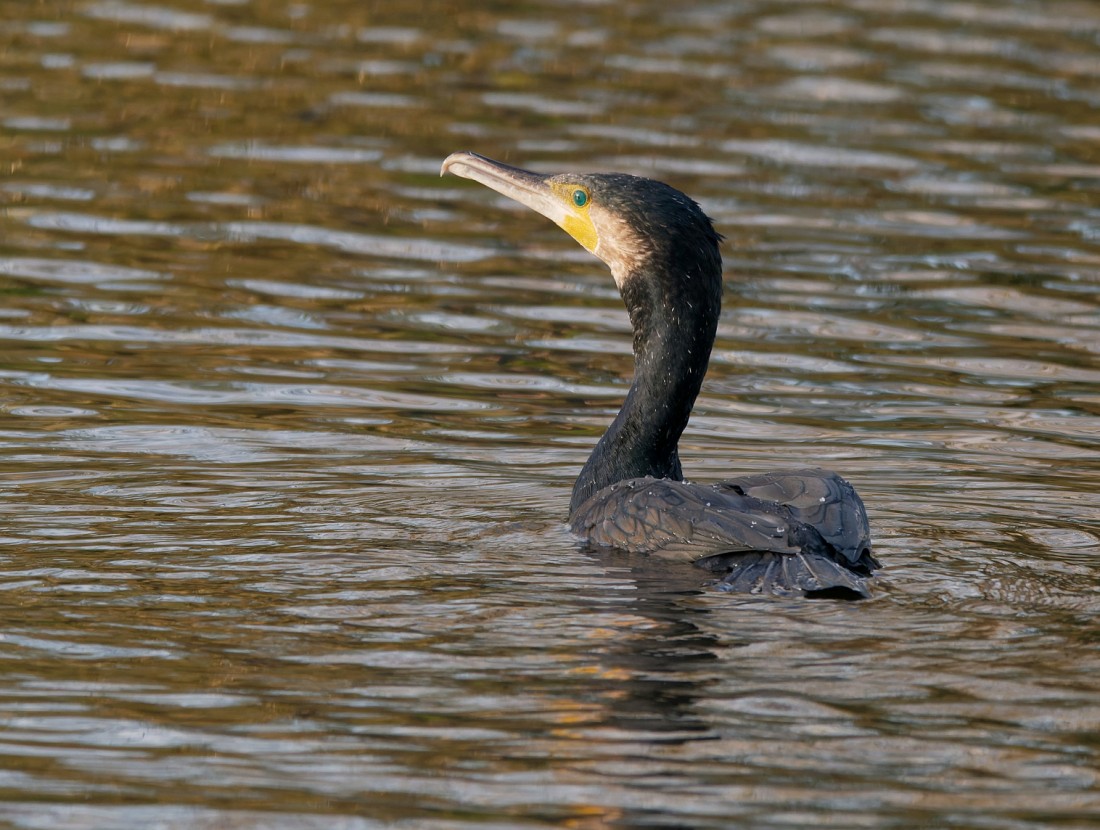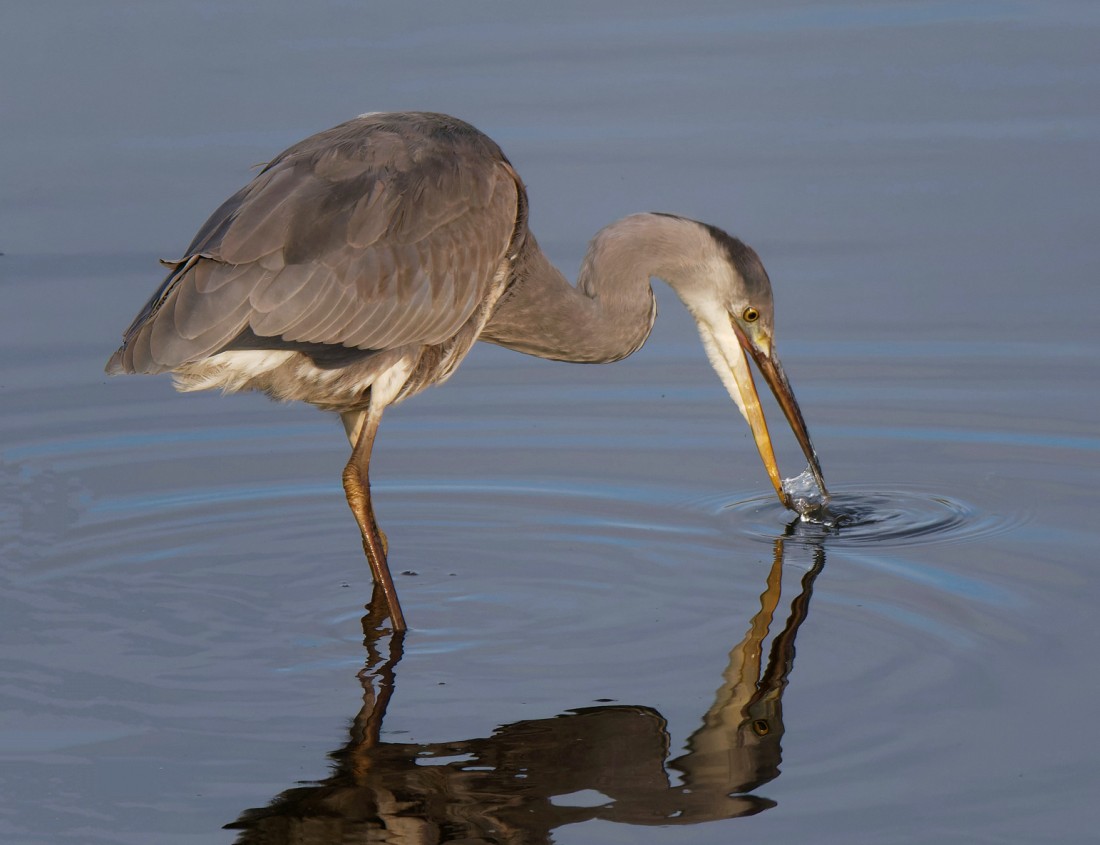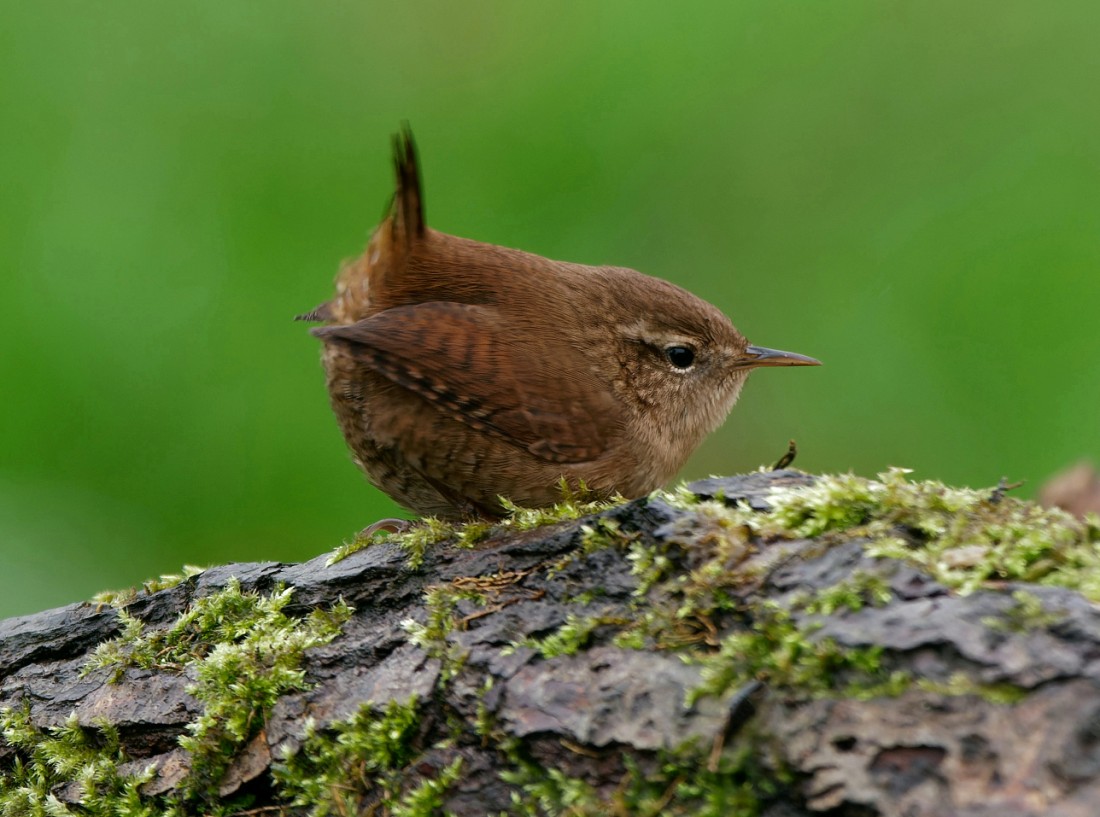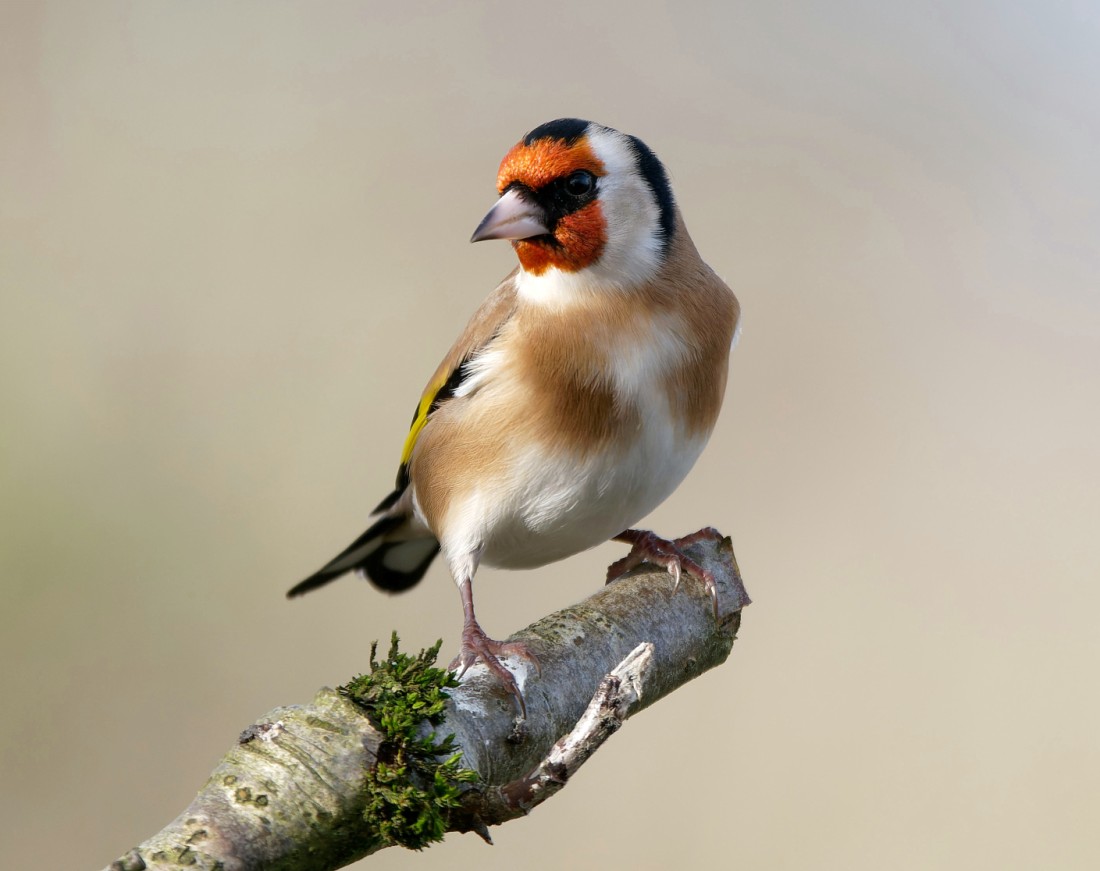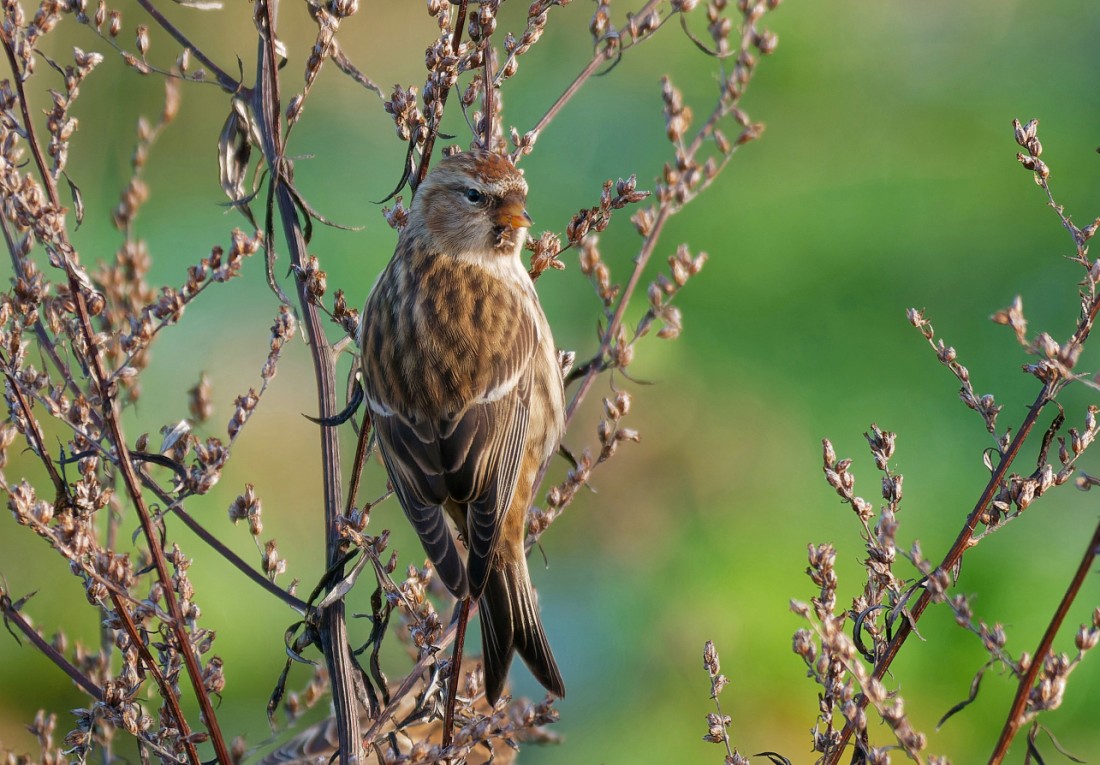Woolston Eyes Monthly Sightings
2020-12-30
The combination of a hard overnight frost and heavy ground mist produced some really atmospheric conditions, early this morning. With the No.3 bed lagoon frozen solid and limited visibility, the early focus was on the Morgan Hide feeding station, with four Bramblings, seven Lesser Redpolls and a Water Rail the pick of the bunch. Then it was a wander onto No.4 bed, for a progress meeting with the contractor who is building our amazing new wetland. Despite the conditions, 200 wildfowl were working hard to keep a small pool open, with 100 Teal and 40 Coot doing most of the work, along with smaller numbers of Gadwall, Shoveler, Mallard and Mute Swans. Then a skein of 200 Pink-footed Geese dropped down, to take a brief look at the wetland before carrying on to the west and, finally, a flock of 120 Fieldfares and a few Redwings filtered through the remaining areas of scrub. Photo of a misty sunrise on No.3 bed Cheers David
Submitted by: David Bowman
2020-12-29
I started onto No.3 bed in the midst of a dawn snow flurry. Cold spells often bring hard-weather movements of birds, so it was eyes peeled all morning. First arrivals were 12 Wigeon and 5 Goosanders, which circled the frozen lagoon before seeming to drop onto the deeper waters of the Oxbow. The Morgan Hide feeders were alive with birds, with many more seed-eaters feeding around the bed. Totals included: 4 Bramblings, 1 Siskin, 200 Greenfinches, 10 Bullfinches, 75 Goldfinches, 80 Chaffinches and 12 Reed Buntings, though these are all likely to be minimum counts. Walking round the bed, a Woodcock flushed and the odd Redwing was with the more numerous Blackbirds and Song Thrushes, while two Cetti’s warblers were calling. Unusually for No.3 bed, 15 Meadow Pipits were feeding in the seed crop, with another in front of the Morgan Hide. The icy conditions also delivered views of two Water Rails, while a Kingfisher zipped over the ice, looking for a place to fish. I ended up with 60 species seen, which isn’t bad for the time of year. Photo of a Reed Bunting Cheers David
Submitted by: David Bowman
2020-12-21
On a mild morning with misty drizzle, just a couple of hundred Pink-footed Geese left the No.3 bed roost at dawn. The small Starling roost shows no signs of growing, either, remaining at around 500. Among the many, commoner birds Water Rail, Kingfisher and a drake Pintail were notable, along with several calling Cetti’s Warblers, while three Goldeneyes were reported from the Weir Basin. On No.4 bed progress with the wetland remains steady and the portion already completed held plenty of birds, including: 1 Green Sandpiper, 5 Common Snipe, 10 Gadwall, 19 Pied Wagtails, 25 Mallard, 10 Canada Geese, 8 Shoveler, 30 Teal, 19 Coot, 25 Linnets, 70 Goldfinches and 80 Chaffinches. Photo of a Greenfinch Cheers David
Submitted by: David Bowman
2020-12-20
This link is to a short video showing a 2nd-calendar year Marsh Harrier hunting on No.3 bed. This well-marked female has been a regular visitor over the autumn and early winter. Marsh Harriers tend to first breed in their third year and it would be nice to think that she’d find a partner and stay and breed next year. With the large increase in wetland areas on Nos.1 and 4 beds, the habitat could easily support at least one pair. The video also shows a Great Black-backed Gull, a Redwing and a few of the 5,000 Pink-footed Geese which dropped in to feed on stubble fields to the south of Butchersfield Tip during yesterday’s Visible Migration Watch.
To watch David’s video CLICK HERE… or paste the following link into your browser https://youtu.be/XpGgt3hfmsI Cheers David
Submitted by: David Bowman
2020-12-19
Today was the final Visible Migration watch of the year at Woolston Eyes. Although migration is largely over by the end of November, we’ve always held one in December, with varied results - they are either a washout or they produce something really interesting. The morning started with a passing Goosander and ca. 5,000 Pink-feet arriving in waves to drop onto stubble fields to the south of the Tip. They were followed by more than 7,500 which flew east in constant skeins over the morning, giving a record total of 12,500. The Northern Pools produced a feeding flock of 41 Snipe, along with 2 Yellowhammers and a calling Golden Plover. Other counts included: 81 Meadow Pipits, 90 Linnets, 5 Ravens, 1 Peregrine, 8 Buzzards, 2 Kestrels, 4,500 Woodpigeons and 450 Starlings. Photo of a Kestrel Cheers David (with Dave Steel and Helen Wynn)
Submitted by: David Bowman
2020-12-17
After a very drizzly Wednesday, it was good to arrive at dawn this morning to a cold but clear sky. Noticeable on arrival was the absence of any Pink-footed Geese leaving the No.3 bed roost. They either left much earlier than recently, due to the clear skies, or they’ve moved on to pastures new. Hopefully the former. A couple of thousand Woodpigeons moved south soon after dawn, 650 Starlings left their reed-bed roost and a few Redwings and Fieldfares also passed over. Highlight of the day, though, was watching the well-marked female Marsh Harrier, which has been a regular visitor over the late autumn/winter, hunting the 800 or so Teal around the bed. A wintering Chiffchaff was caught and ringed and a pair of mating Teal was an unusual sight, so far ahead of the breeding season. Photo of the mating Teal Cheers David (with David Spencer and George Dunbar)
Submitted by: David Bowman
2020-12-13
This link is to some grainy footage of some of the Pink-footed Geese leaving their roost on Saturday morning.
To watch David’s video CLICK HERE… or paste the following link into your browser, https://youtu.be/rSUlHLcLt2o Cheers David
Submitted by: David Bowman
2020-12-12
The second highest WeBS Count in Eyes History. Total 5806 birds! Little Grebe 5,Great Crested Grebe 1, Cormorant 13, Mute Swan 44, Grey Heron 6, Greylag Goose 120, Canada Goose 320, Pink-footed Goose 3000 (roosted) Shelduck 13, Gadwall 74, Teal 1457, Mallard 263, Pintail 1, Shoveler 97,Pochard 9, Tufted 124 Goldeneye 4, Mandarin 4, Coot 58, Moorhen 55, Water Rail 1, Kingfisher 3 Lapwing 18, Snipe 6, Jack Snipe 2, Green Sandpiper 2, BHG Gull 102, GBB Gull 3 LBB G.1
Submitted by: Brian Martin
2020-12-12
It was the morning for the monthly Wetland Bird Survey (WeBS) , so we arrived before dawn to count the huge flock of Pink-footed Geese which is currently roosting on No.3 bed. In almost forty years of undertaking these counts, we’ve never managed to include Pink-footed Geese, as these winter visitors from Iceland and Greenland are usually just seen flying over. As the darkness started to lift, more than 3,000 could be seen covering the lagoon from end to end, before launching off with a crescendo of yelping calls to head for their feeding grounds on the adjacent stubble fields. With wardens covering all parts of the Reserve, there were some good counts and decent variety. Highlights were (with some counts still to come in): 3,000 Pink-footed Geese, 4 Mandarins (3 males), 1 Jack Snipe, 2 Green Sandpipers, 1 Goldeneye, 6 Common Snipe, 1 Kingfisher, 1 Water Rail, 1 Pintail, 7 Pochards, 1,200 Teal, 260 Canada Geese, 120 Greylag Geese, 75 Shoveler, 55 Gadwall, 120 Mallards and 26 Moorhens.
Photo of a Cormorant on the Oxbow
Cheers David (with Helen Wynn, David Spencer and Brian Martin)
Submitted by: David Bowman
2020-12-10
The day started bright and sunny which made a pleasant change after so much wet weather. At Bollin Point a large group of Pink-footed Geese was feeding in fields to the east of the river Bollin. They were quite distant but easily identified by their calls. I estimated about 2000 birds were present and these were no doubt the ones that had been roosting on No.3 bed and feeding in the fields to the south of Butchersfield Tip. The more common species of goose were also present in high numbers with reserve totals of 405 Canada and 42 Greylags counted. A Goldeneye was at Bollin Point and three males in the Weir basin. As I arrived on No.3 bed a female Marsh Harrier was showing well and flushed about 250 Teal out of cover. A further 150 Teal were on the new wetland on No.4 bed and a Water Rail was calling on the Loop. Reserve totals included 119 Mallard and 36 Mute Swans.
Submitted by: Dave Hackett
2020-12-10
Another pre-dawn start on No.3 bed, in order to check on the numbers of Pink-footed Geese roosting. On a slightly less gloomy morning than recently, the geese didn’t launch off till nearly 8.00 am, with numbers still in excess of 2,500. We then decided to try and track down where they were feeding and while driving off the Reserve a pair of Goosanders were noted on the Ship Canal. David Spencer, Daniel Owen, Danny Gornall and I then found our first feeding flock, of around 1,000, on a potato field to the north of Reddish Lane, Lymm. We managed to read the neck-ring of one of the birds -VPP - which will give us some information on its origins. After the others left I went to check out other suitable feeding sites and found three more large flocks - 1,500 feeding on Corn stubbles to the east of Lymm Golf Club and two flocks totalling c.1,700 on Barley stubbles on Holcroft Moss. a video showing the Goosanders though you have to be a goose aficionado to watch to watch the rest of it!
To watch David’s video CLICK HERE……… or simply cut and paste the following link into your browser https://youtu.be/iw_AUGQBl9Y
Submitted by: David Bowman
2020-12-08
Another pre-dawn start on No.3 bed, in order to check on the numbers of Pink-footed Geese roosting. On a slightly less gloomy morning than recently, the geese didn’t launch off till nearly 8.00 am, with numbers still in excess of 2,500. We then decided to try and track down where they were feeding and while driving off the Reserve a pair of Goosanders were noted on the Ship Canal. David Spencer, Daniel Owen, Danny Gornall and I then found our first feeding flock, of around 1,000, on a potato field to the north of Reddish Lane, Lymm. We managed to read the neck-ring of one of the birds -VPP - which will give us some information on its origins. After the others left I went to check out other suitable feeding sites and found three more large flocks - 1,500 feeding on Corn stubbles to the east of Lymm Golf Club and two flocks totalling c.1,700 on Barley stubbles on Holcroft Moss. The link is to a video showing the Goosanders though you have to be a goose aficionado to watch to watch the rest of it!
To watch David’s video CLICK HERE… or paste the following link into your browser, https://youtu.be/VXOf39gt5aQ Cheers David
Submitted by: David Bowman
2020-12-08
Arriving on No.3 bed at dawn this morning was made worthwhile by the sight and sound of more than 2,500 Pink-footed Geese leaving their roost on the lagoon. This is an unprecedented occurrence for us and one which we hope continues for a little while longer. If you want to enjoy the spectacle of them coming or going, a dawn or dusk watch from the footpath along the west bank of No.2 bed will see them passing right overhead. Another reward for the early start was a Barn Owl, no doubt attracted by the hundreds of Starlings and Pied Wagtails roosting on the bed, which provide easy feeding for our nocturnal predators. After some cursory birding from the Morgan Hide I decided I had to find out where our Pink-feet flock was feeding. They are attracted to the fallen grain on stubble fields, a resource which is becoming scarcer in the north-west and my first port of call delivered the goods. The large arable fields to the south of Butchersfield Tip (accessed via the footpath along Sow Brook at Lymm) are currently in corn stubbles, rather than the usual winter cereals, and I estimated 3,000 Pink-feet were feeding. The link is to a short, shaky video showing a few of the feeding geese.
To watch David’s video CLICK HERE… or cut and paste the following link into your browser, https://youtu.be/VXOf39gt5aQ Cheers David
Submitted by: David Bowman
2020-12-06
Here’s a link to a two minute video of some this weeks birds. It shows: a female Marsh Harrier, a tumbling Raven, a Grey Heron catching a fish, Goldfinch and Lesser Redpoll feeding, Common Snipe plus Water Rail and Brambling under the Morgan Hide feeders.
To watch David’s video CLICK HERE… or paste the following link into your browser, https://youtu.be/ARjq4_ElQhU Cheers David Bowman
Submitted by: David Bowman
2020-12-05
Iit was exciting to find 250 roosting in front of the Sybil Hogg Hide before launching off to head east, presumably to feed on local stubble fields. With the Pink-feet was a larger goose, which we suspect might be the White-fronted Goose which has been seen, locally, feeding with Pink-feet. Then, from the Morgan Hide, we were treated to a Water Rail, a couple of Lesser Redpolls feeding on Mugwort, a male Brambling, a male Peregrine trying to catch Woodpigeons and another 600 Pink-feet flying eastward. The prospect of the Pink-feet returning to roost in the evening tempted me to stay till dusk, when I was re-joined by David Spencer. Between us we counted in 180 Pied Wagtails and 300 Starlings into their respective roosts, with a Peregrine snatching one of the latter but no geese. Reaching the car park, however, in almost complete darkness, we heard a mass of Pink-feet arriving to drop in to the bed. Photo of a Grey Heron catching a fish Cheers David
Submitted by: David Bowman
2020-12-03
Walking on to No.3 bed, a Chiffchaff was feeding and calling and two Woodcocks were flushed. With nine flushed on my last two walks round the paths on Nos.1 and 3 beds, the numbers present across the whole Reserve must be numbered in scores. From the Morgan Hide, two drake Pintails, a couple of Lesser Redpolls and a pair of passing Ravens were noteworthy, along with 500 Pink-footed Geese which flew eastwards in six skeins. We checked them all to see if we could pick out a Greenland White-fronted Goose, one of which has been seen locally but without any luck.
Photo of a Wren
Cheers David
Submitted by: David Bowman
2020-12-02
In spite of a wet morning there was plenty to see on my weekly walk round the reserve. A female Goldeneye was at Bollin Point and two Peregrines were on the viaduct. Two skeins of Pink footed Geese flew east at about 8.30 a.m. I estimated about 300 in total. Two male Goldeneye were on the river near the weir basin and a Little Grebe was again trilling in the Fish Refuge. Three Pochard were on the river between Nos. 2 and 3 beds and on No.3 bed three Pintail were present amongst about 300 Canada Geese Moving on to No.4 bed a Raven was heard in the distance and 4 Pied Wagtails were on one of the muddy areas. Wildfowl totals included 269 Tufted Duck, 93 Mallard, 35 Coot and 43 Shoveler.
Submitted by: Dave Hackett
2020-12-01
A beautiful morning on No.3 bed, with: 3 Woodcocks, a female Marsh Harrier, 1,500 Woodpigeons flying north in an hour, a calling flock of 220 Pink-footed Geese flying eastwards and more than 300 “seed-eaters”, including: 3 Lesser Redpolls, 8 Linnets, 15 Reed Buntings, 30 Goldfinches, 140 Greenfinches and 120 Chaffinches, with at least three Sparrowhawks drawn in by the wealth of available prey. Photo of a Lesser Redpoll Cheers David Bowman
Submitted by: David Bowman

